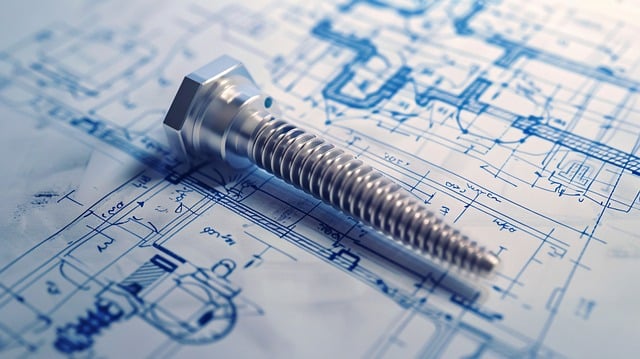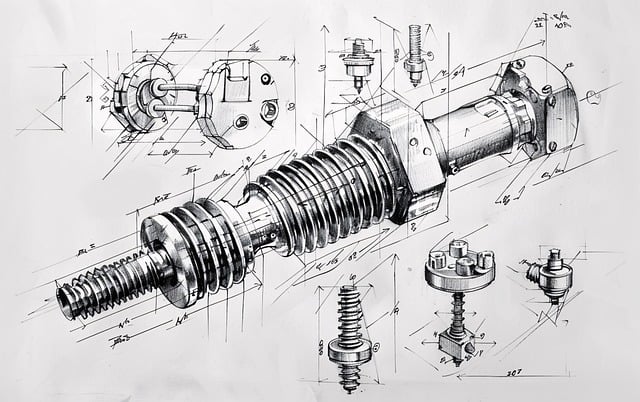Technical SEO is vital for optimizing website performance and user experience by focusing on behind-the-scenes factors like server response time, HTTP requests, and image compression. Strategies such as browser caching, content delivery networks (CDNs), asynchronous loading, and optimized database queries reduce load times, benefiting users with faster page loads and positively influencing search engine rankings. Regular audits using automated tools and manual checks identify and resolve issues, ensuring the website remains competitive in a dynamic digital landscape.
In today’s digital era, website speed optimization is paramount. A fast-loading site enhances user experience, boosts conversion rates, and improves search engine rankings through Technical SEO. This comprehensive guide delves into crucial aspects like understanding website speed impact, leveraging technical SEO for faster load times, identifying slow elements, compression techniques, browser caching, asynchronous loading, image optimization, and the importance of regular audits. By implementing these strategies, you can revolutionize your site’s performance.
Understanding Website Speed and Its Impact on Users

Website speed is a critical aspect of user experience, directly impacting how visitors perceive and interact with your online platform. It’s essential to understand that fast-loading websites enhance user satisfaction, leading to lower bounce rates and increased time spent on the site. Conversely, slow websites can drive users away, negatively affecting conversion rates and overall business performance. This is where Technical SEO plays a pivotal role in optimizing website speed.
By employing best practices in Technical SEO, developers and content creators can ensure efficient data compression, minimize HTTP requests, leverage browser caching, and optimize image sizes. These techniques collectively contribute to reducing page load times, thereby improving the overall user journey. Faster websites not only cater to users’ expectations but also provide a competitive edge, as search engines often favor fast-performing sites in their rankings.
Technical SEO and Its Role in Optimizing Load Times

Technical SEO plays a pivotal role in optimizing website load times, ensuring your site is not just visible but also performs swiftly. It involves optimizing the behind-the-scenes aspects of your website, such as improving server response time, minimizing HTTP requests, and compressing images and code to reduce payload sizes. These technical optimizations directly impact how fast your pages load, which is a critical factor in user experience and search engine rankings.
By focusing on Technical SEO, you can ensure that your website’s infrastructure is efficient and robust. This includes leveraging browser caching to serve static assets faster, implementing a content delivery network (CDN) for geographic distribution, and optimizing database queries to streamline data retrieval. These strategies collectively contribute to shorter load times, making your site more user-friendly and search engine-friendly.
Identifying Slow-Loading Elements: A Comprehensive Guide

Identifying slow-loading elements is a crucial step in optimizing your website’s performance, especially from a Technical SEO perspective. Start by using browser developer tools to analyze page load times and pinpoint specific components contributing to delays. These tools often provide insights into resource loading order, sizes, and load durations, helping you understand which elements are slowing down your site.
Focus on critical assets like images, scripts, and stylesheets that take the longest to load. Examine their source codes, file formats, compression, and optimization techniques. Image compression is a powerful strategy; consider using modern formats like WebP that offer better compression without sacrificing quality. Minimizing and combining CSS and JavaScript files can also significantly reduce parsing times, enhancing overall page speed.
Compression Techniques to Reduce Page Size

In the realm of Technical SEO, optimizing website speed is paramount for enhancing user experience and improving search engine rankings. One effective strategy involves compression techniques to reduce page size. By compressing images, CSS, and JavaScript files, websites can significantly lower their load times. Tools like Gzip or Brotli can compress data without noticeable quality loss, ensuring a faster delivery of content to users’ browsers.
This process is crucial as smaller file sizes mean quicker loading times, which directly impacts bounce rates and time on page. Search engines like Google prioritize sites with excellent speed performance, making compression techniques not just an optimization tool but a critical component for any successful website’s Technical SEO strategy.
Leveraging Browser Caching for Faster Access

Leveraging browser caching is a powerful strategy in website speed optimization, offering significant improvements in technical SEO and user experience. When a user visits your site, their browser requests and receives web page files from the server. By enabling caching, frequently accessed resources like CSS, JavaScript, and images are stored locally on the user’s device for future visits. This process drastically reduces load times as the browser doesn’t need to fetch these files from the server each time, enhancing overall website performance.
For effective implementation, web developers can set caching headers, indicating how long and under what conditions (e.g., specific file types) cached resources should be stored. This ensures that static assets remain accessible quickly while dynamic content prompts fresh requests, maintaining a balance between speed and content relevance. As a result, users enjoy faster loading pages, leading to better engagement and search engine rankings.
Implementing Asynchronous Loading for Efficient Resource Delivery

Implementing asynchronous loading is a powerful strategy in website speed optimization, directly impacting Technical SEO. By deferring non-critical resource loading until after the initial page content has been rendered, websites can significantly reduce perceived load times. This technique ensures that users see a functional, if basic, version of your site quickly, enhancing their experience and reducing bounce rates.
Asynchronous loading allows for efficient delivery of resources, such as JavaScript and CSS files, by prioritizing them based on their order of appearance on the page. This approach optimizes page rendering, ensuring faster load times without sacrificing the functionality or visual appeal of your website. It’s a key element in creating a smooth user experience, which is not only beneficial for search engine rankings but also fosters higher engagement and conversion rates.
Optimize Images: Tips for Web Performance Enhancement

Optimizing images is a crucial aspect of website speed enhancement, and it plays a significant role in improving user experience and overall web performance. When implementing Technical SEO strategies, paying attention to image compression and resizing can make a substantial difference. Start by compressing images without losing quality; this reduces file sizes significantly, leading to faster load times. Tools like TinyPNG or JPEG-Optimizer are great for this task.
Additionally, consider using modern image formats like WebP, which offer better compression than traditional JPEGs or PNGs. Many web browsers now support WebP, and it can dramatically improve loading speeds, especially on high-resolution images. Resizing images to match the display size of your website is another efficient practice; this prevents large images from being rendered at a higher resolution than necessary, thereby saving time and resources.
Regular Website Audits: Ensuring Continuous Speed Improvement

Regular website audits are a crucial aspect of technical SEO, enabling continuous optimization and speed improvement. By conducting thorough analyses at set intervals, webmasters can identify performance bottlenecks and address them proactively. These audits offer a comprehensive view of various factors influencing page load times, such as code efficiency, image compression, server response, and network latency.
Through automated tools and manual inspections, potential issues like slow-loading resources, redundant code, or outdated plugins are uncovered. Addressing these problems not only enhances website speed but also boosts user experience, search engine rankings, and overall site credibility. Regular audits ensure that the website remains optimized in a dynamic digital landscape, keeping it competitive and relevant.
